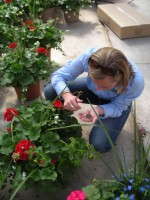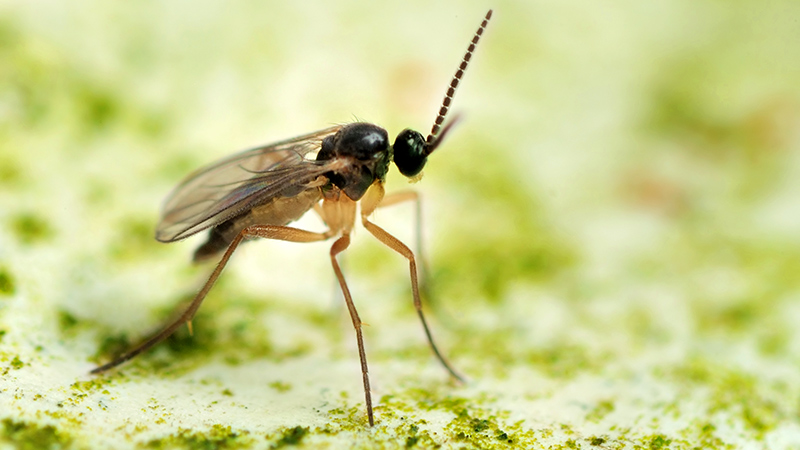Biocontrols: Four Tips On Using Them In The Greenhouse

In their years of experience, Grower Direct Farms and Post Gardens have learned a thing or two about using biocontrols. Here’s the advice they give to other growers who are using or considering using living organisms to control insects and diseases in the greenhouse.
1. Weather during application can make a difference. No Fly (for control of thrips, whitefly and mites) and Met 52 (for control of thrips, aphids and whitefly) should be used on cloudy days, says Post Gardens’ Bill Tuinier. The fungi in these foliar sprays needs to stay on the plant for as long as possible so insects can ingest them. Too much sun will cause the treatment to evaporate.
2. Find out how biocontrols work in order to use them most effectively. To build a program, figure out which biocontrols are appropriate for your crop and how much of them to use order to keep pest pressures down. Tuinier cites one cucumeris that Post has used — it crawls from plant to plant. When crops aren’t spaced pot-to-pot, the cucumeris doesn’t spread as easily. With more widely spaced plants, growers need to hang a sachet on each plant. “It’s a learning curve, but something you can get in and out of fairly easily,” he says.
3. Find out which chemicals can be used with biologicals. BCA suppliers share compatibility charts that show when and how traditional controls can be used in a program with BCAs. Adam Van Wingerden says Grower Direct Farms’ populations have been affected where certain fungicides are used, and the operation doesn’t use BCAs in vegetative propagation areas as a result. On the other hand, “You can spray Avid, then a week later you can come back in with biologicals,” Tuinier says.
4. Don’t go it alone. If you’re planning to jump into using biocontrols, enlist the help of an entomologist. Post Gardens’ supplier, MGS, came to Post with an entomologist, who has helped build the program over the last three years. “You can’t do it on your own. You need help,” Tuinier says. “That person comes out about once a month to make sure everything is OK and to help scout. You need that kind of backing to make it feel comfortable. Going it on your own is not easy to do.”










